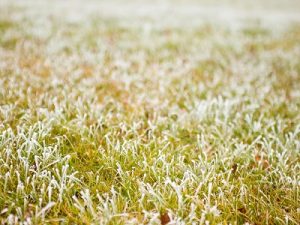 Maintaining a lush, healthy lawn requires proper care and attention. Unfortunately, many homeowners make mistakes that can harm their grass and hinder its growth. To help you avoid these pitfalls, here are ten common lawn care mistakes to steer clear of.
Maintaining a lush, healthy lawn requires proper care and attention. Unfortunately, many homeowners make mistakes that can harm their grass and hinder its growth. To help you avoid these pitfalls, here are ten common lawn care mistakes to steer clear of.
Avoid These Common Lawn Care Mistakes
Neglecting to pick up clumps of grass after mowing:
Leaving clumps of clippings on your lawn blocks sunlight and suffocates the grass. Remove clumps by raking or mowing over them again once they are dry. Failure to do so can lead to the death of your grass over time.
Aeration and seeding at the wrong time:
For best results, aerate and seed your lawn during the growing season. This allows the grass to heal and fill in any bare areas after removing soil plugs.
Using dull mower blades:
Dull mower blades tear and shred the grass instead of providing a clean cut. This can result in moisture loss and give your lawn a brownish appearance. Check for frayed grass blades as a sign that it’s time to sharpen your mower blade.
Mowing in the same direction every time:
Mowing your lawn in the same direction repeatedly causes the grass blades to bend over, leading to a less healthy and dense lawn. Vary your mowing pattern each week to encourage upright growth. If you notice the grass bending over, lightly rake the lawn before mowing to help it stand up for a cleaner cut.
Improper watering – under or overwatering:
 Watering your lawn incorrectly can lead to problems. Overwatering can wash away nutrients, promote fungal growth, and stress the grass, making it more susceptible to disease. Most lawns need one to two inches of water per week, so find the right balance to avoid issues.
Watering your lawn incorrectly can lead to problems. Overwatering can wash away nutrients, promote fungal growth, and stress the grass, making it more susceptible to disease. Most lawns need one to two inches of water per week, so find the right balance to avoid issues.
Lack of a yearly plan:
To maintain a healthy lawn year-round, it’s essential to have a plan in place. Determine the specific needs of your lawn at different times of the year and ensure it receives the necessary care and maintenance.
Ignoring seasonal changes:
Seasonal changes impact your lawn’s health and recovery. Prepare your lawn for each season by adjusting mowing frequency and height, watering practices, and considering aeration when needed.
Neglecting to use fertilizer:
Fertilizing is crucial for a vibrant, envy-worthy lawn. However, knowing when and how to fertilize can be challenging due to the wide variety of products available. Educate yourself on proper fertilization techniques to ensure optimal results.
Choosing the wrong grass type for your climate:
Selecting the appropriate grass type based on your climate is essential. Warm-season and cool-season grasses thrive in different conditions. Planting the wrong grass for your region can result in wasted time and money, as it will eventually die off.
Cutting the grass too short:
Repeatedly mowing the grass too short, also known as scalping, depletes the grass’s energy reserves, weakens it, and makes it more susceptible to weed invasion. Maintain an appropriate mowing height to promote healthy growth and a lush lawn.
By avoiding these common mistakes, you’ll be well on your way to achieving a beautiful and thriving lawn that enhances your outdoor space.
Call Conner’s Lawn Care Service now and let our team take care of your lawn.
Conner’s Lawn Care Service
Myrtle Beach, SC
843-504-4901
http://connerslawncare.com/



